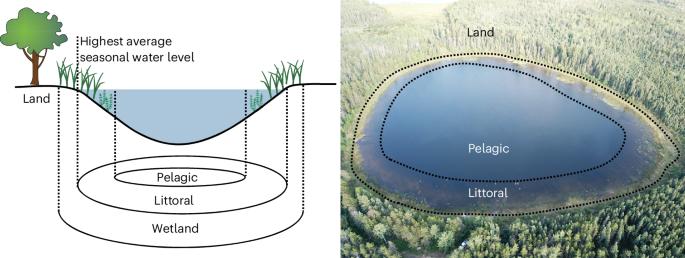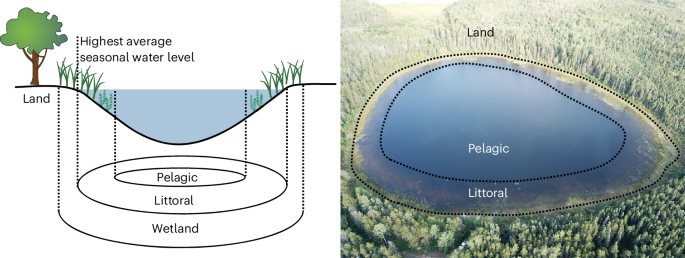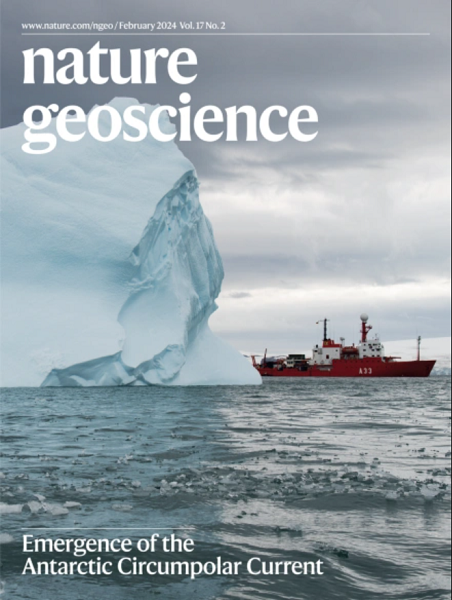Contribution of lake littoral zones to the continental carbon budget
IF 16.1
1区 地球科学
Q1 GEOSCIENCES, MULTIDISCIPLINARY
引用次数: 0
Abstract
In the littoral zone, at the land–water interface of lakes, the areal productivity of aquatic vegetation rivals that of rainforests, resulting in a potentially very high carbon (C) turnover. Whereas tidal wetlands at the land–ocean interface are included in global C budgets, lake littoral zones are currently not accounted for, despite the total shoreline of lakes being estimated at four times longer than that of the global ocean. Here we quantify the littoral net atmospheric C sink using mass balance and a model of C export from the littoral to the pelagic zone. We argue that ignoring littoral C turnover in lakes potentially results in biased estimates of continental C cycling. In our global estimate, we show that the estimated global C balance of lakes may reverse from a net C source to a net C sink (that is, net C burial > net C outgassing). In addition, a large part of the C outgassed in the pelagic might originate from the littoral, implying that previous estimates of terrestrial C inputs to inland waters were too high. We argue that quantifying and modelling lake littoral C fluxes are essential to more accurately estimate the feedback between the continents and climate. The land–water interface of lakes is highly vegetated and may reverse the global carbon balance of lakes from a net source to a net sink, according to a mass balance and horizontal transport model quantification of lake littoral zones.


湖滨带对大陆碳收支的贡献
在沿海地区,在湖泊的陆水界面,水生植被的面积生产力可以与雨林相媲美,从而导致潜在的高碳(C)周转量。虽然陆地-海洋界面的潮汐湿地被包括在全球碳预算中,但湖泊沿岸地区目前还没有考虑在内,尽管湖泊的总海岸线估计比全球海洋的海岸线长四倍。在这里,我们使用质量平衡和从沿海到远洋的碳输出模型来量化沿海大气净碳汇。我们认为,忽略湖泊的沿海碳周转量可能导致对大陆碳循环的估计有偏差。在我们的全球估计中,我们表明估计的全球湖泊碳平衡可能从净碳源逆转为净碳汇(即净碳埋藏>;净C除气)。此外,在海洋中排放的大部分碳可能来自沿海,这意味着以前对内陆水域陆地碳输入的估计过高。我们认为,湖泊沿岸碳通量的量化和模拟对于更准确地估计大陆和气候之间的反馈至关重要。
本文章由计算机程序翻译,如有差异,请以英文原文为准。
求助全文
约1分钟内获得全文
求助全文
来源期刊

Nature Geoscience
地学-地球科学综合
CiteScore
26.70
自引率
1.60%
发文量
187
审稿时长
3.3 months
期刊介绍:
Nature Geoscience is a monthly interdisciplinary journal that gathers top-tier research spanning Earth Sciences and related fields.
The journal covers all geoscience disciplines, including fieldwork, modeling, and theoretical studies.
Topics include atmospheric science, biogeochemistry, climate science, geobiology, geochemistry, geoinformatics, remote sensing, geology, geomagnetism, paleomagnetism, geomorphology, geophysics, glaciology, hydrology, limnology, mineralogy, oceanography, paleontology, paleoclimatology, paleoceanography, petrology, planetary science, seismology, space physics, tectonics, and volcanology.
Nature Geoscience upholds its commitment to publishing significant, high-quality Earth Sciences research through fair, rapid, and rigorous peer review, overseen by a team of full-time professional editors.
 求助内容:
求助内容: 应助结果提醒方式:
应助结果提醒方式:


